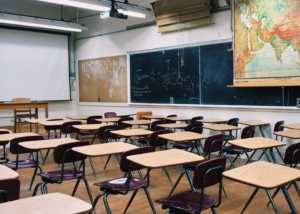 Will students go back to public school campuses this fall?
Will students go back to public school campuses this fall?
Will charter schools reopen?
Will colleges and universities bring students back on campus?
Will testing be available?
Will facemasks be required?
How and when will educators spend the federal recovery funding that has been allocated?
Will projects with previously approved funding be launched soon?
These are the types of questions being asked throughout the country. Every question calls for difficult decisions. Education has been impacted in a huge way by COVID-19.
Governors and mayors will decide how and when to reopen schools. Education officials will determine when to launch new projects. Governors will direct large amounts of funding to school districts. But, those decisions will require difficult choices. No decision maker is clairvoyant, and as long as the country remains in uncharted territory in historically uncertain times, decisions made are likely to be diverse throughout America.
But, those difficult decisions must be made soon. Presently, almost everything is on hold. That cannot continue because plans and preparations must be made for what happens next.
Purchasing and contracting will continue at a fast pace at every level of education. Every state and region has projects to launch, and reopening educational facilities will require all types of purchases. The work of educating students will proceed.
District officials in New York City, home to the largest school system in the country, secured 300,000 new iPads for students. Chicago Public Schools purchased 37,000 new devices as well, and officials in Los Angeles bought laptops to address an estimated shortage of 150,000 take-home computers for students. Purchases such as this are expected to continue.
Many areas of South Carolina have broadband issues, and to meet student needs, 3,000 buses have been serving as Wi-Fi hotspots for internet access. These wired vehicles have been parked throughout rural regions so students may park alongside and have access to the Internet access required to complete online coursework. The problem has been that many parents have had to sit in automobiles all day so that their children could be near the buses to complete schoolwork. The broadband issue already is one of the country’s most immediate priorities.
At the higher education level, universities and colleges have refunded millions in fees to students who were forced to vacate campus housing and forego benefits they had paid for such as housing, parking, meals, gym access, and more. The revenue hit to colleges and universities has been huge as well as to contractors who serviced the campuses. These revenue reductions will result in significant changes because of budget cuts.
In March, Vermont State College officials began discussing the closure of three campuses and reducing the staff by 500 employees as a result of COVID-19. The plan includes closing Northern Vermont University and consolidating Vermont Technical College’s operations onto its Williston campus. The school system is projecting an operating deficit between $7 million to $10 million in spite of $3 million in federal assistance.
The Coronavirus Aid, Relief, and Economic Security, or CARES Act, provides funding to compensate educational establishments. The state of Illinois received $569 million in federal funding for schools. The funding will be allocated by the Illinois State Board of Education, and it will go to schools with the greatest need for resources.
Charter schools also are receiving federal funding. In fact, $65 million in grant funding has been awarded to 13 different Charter Management Organizations (CMOs) for the expansion and creation of 100 high-quality public charter schools in underserved communities. Mater Academy, Inc. in Florida was allocated $19.2 million, Responsive Education Solutions in Texas received $14 million, and Achievement First, Inc. in Connecticut got $3.5 million.
This month approximately $3 billion became available to school districts through the Governor’s Emergency Education Relief (GEER) fund. GEER is the most flexible portion of the larger $30 billion Education Stabilization Fund of the CARES Act. This funding will flow directly to governors and it will be distributed to education-related entities that a governor “deems essential for carrying out educational services to students.” States are required to submit a process for awarding this grant funding within the next 45 days.
Texas
Many school districts have funded projects ready to launch. Approved bond elections have provided an abundance of funding that is available. In May 2019, voters approved $151.1 in funding for the Nederland Independent School District (NISD). That bond package included funding for a new high school, upgrades to two middle schools, and expansions of four elementary schools. Bidding will begin this summer for reconstruction of the four elementary schools. The high school is nearing the design development milestone. Once the design is approved, construction solicitations will begin. Middle school campus projects are still in the schematic design phase.
California
The Visalia Unified School District has four potential design options for its fifth high school. Construction decisions are yet to be made, but funding is available to cover this new campus. The revenue is available because of an approved $105.3 million bond package. An allocated $30 million is available for school modernization, new science labs, and campus security projects.
Michigan
Voters in Michigan recently approved five very large school district bonds. Funding approved for Plymouth-Canton was $275 million, Birmingham – $195 million, Pontiac – $147 million, Ferndale – $124.8 million, and East China – $112.9 million. Another $80 million was approved for projects at Mott Community College which will use the funds for renovating, remodeling, and upgrading various college facilities.
Missouri
Three school districts in Missouri had to postpone an April 7 bond election that is now scheduled for June of this year. The Neosho School District will request $22 million to construct a performing arts center and a field house. The Joplin School District will ask voters to approve $25 million to construct a new elementary school. The Carthage School District will request $10 million to expand the South Tech Center and remodel the North Tech Center.
COVID-19 has forever changed many sectors in America, and education is one of the most impacted areas. But, the education of students of all ages will not be neglected.
SPI’s newsletters are excellent sources of government procurement information. Subscribe here.







